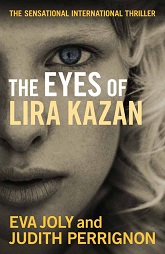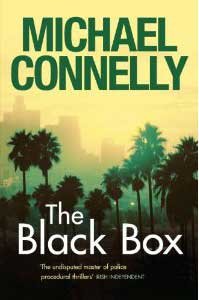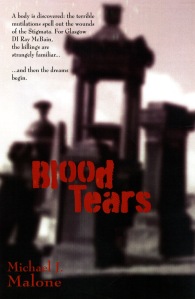
The Eyes of Lira Kazan
by Eva Joly and Judith Perrignon
translated by Emily Read
Bitter Lemon Press, 2012
First published in France, 2011
When I discover that a book is said to be, as in this case, a “sensational international thriller”, my heart sinks, as experience has shown that such books tend to be disappointing mish-mashes. Not so in the case of The Eyes of Lira Kazan, which is a great read: exciting, poignant, sophisticated and bang up to date. Not only is the plot a ripper, but the characters are individual and alive on the page. The translation by Emily Read is so naturalistic it was hard for me to believe that the book was not originally written in English.
The word “international” is a clue that the action takes place in a range of countries. In an opening section, Nwankwo Ganbo, the head of the fraud squad in Lagos, is hastily attempting to flee the country with his wife and three young children, after his best friend and close colleague has been murdered. The family hope to reach England, where the British government has offered Nwankwo asylum and a teaching post at Oxford University in exchange for keeping his head down about his knowledge of the extent of financial and violent corruption in Nigeria.
In St Petersburg, Lira Kazan is a journalist in her early 40s. She’s separated from her husband and has a beloved daughter, Polina, who is currently studying in Paris. Lira has for some years been investigating Sergei Louchsky, a man who has made millions since the fall of the Soviet Union and whom Lira knows is evil in a large number of ways. She decides to travel to London to follow one of the lines of evidence she is pursuing, hoping to meet her daughter while she is there.
A judge and his clerk in Nice are confronted by a report that the wife of one of the world’s richest bankers has been found drowned, apparently having fallen off her luxury yacht. Their investigation arouses the wrath of the authorities, who want to write off the death as a swimming accident, despite the fact that the victim was wearing her evening gown when her body was discovered. The judge, as well as Felix (the clerk), continue to dig into the circumstances of the death, little realising the cost to themselves. The husband of the victim, Sunlief Stephensen, is a hilariously awful man from the Faroe Islands, whose Grind (“dolphin”) bank is one pivotal element of this tale. Sunlief must take the biscuit as one of the most evil baddies in modern crime fiction, as the reader learns with horror how his bank took its name.
How these events are connected gradually becomes clear. The main characters, Nwankwo, Lira and Felix, are all brave people with integrity, but for two of them the personal cost of their mission to achieve justice is terrible. Not only is their story an exciting and convincingly realistic one, but as the reader gets to know them, their predicament becomes truly tragic as “the cruelty of the world” takes its toll, particularly so in the case of Lira. Lira is a marvellous creation: bold, intelligent and dedicated in the face of awful reprisals. Will the determined trio give up, will they be stopped, and what they can do with the information they know in the face of establishment opposition? I urge you to read this excellent, relatively short book to find out. The last two or three pages are exceptionally sad and moving.
I bought this book.
Read other reviews of it at: Reviewing the Evidence, The Bookbag and Shots.
From the publisher’s website: “Eva Joly was a prosecuting judge in France famous for her anti-corruption cases, including that against Elf-Aquitaine. She is now running in the French presidential elections. This is her first novel. It is co-authored by the French thriller author Judith Perrignon.” 













